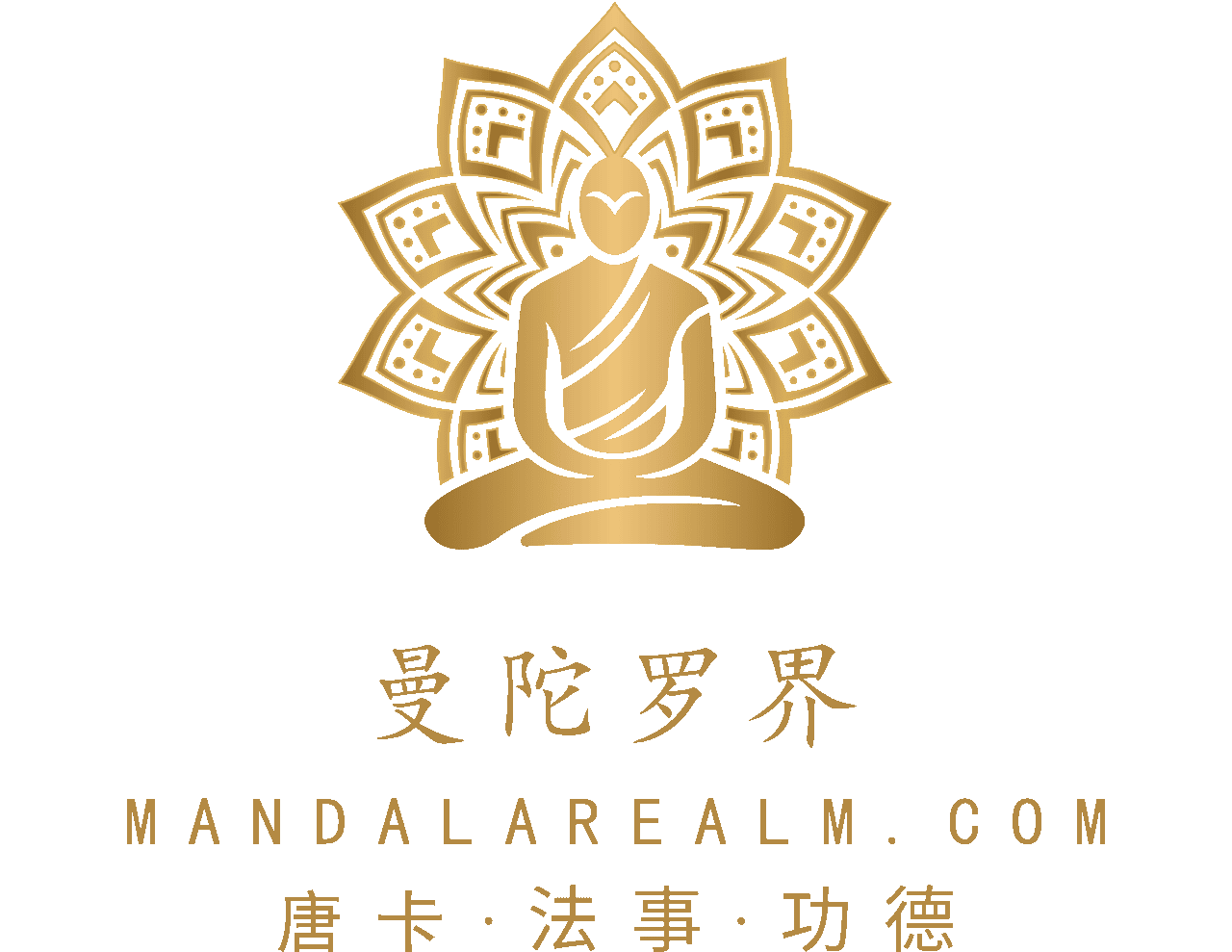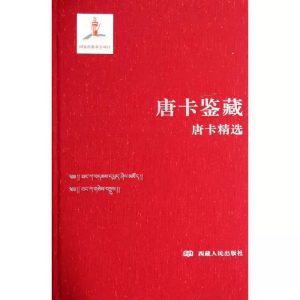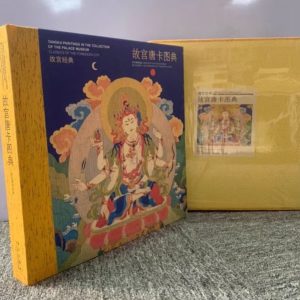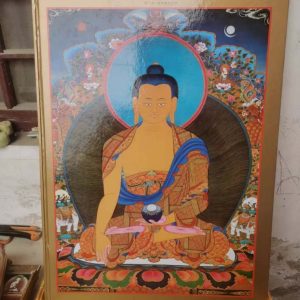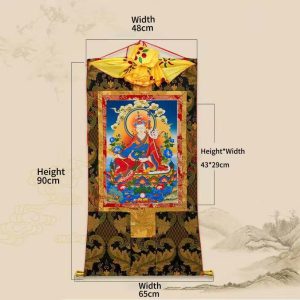Discover the Sacred Art of Drepung Monastery Thangka: Where Tibetan Spirituality Meets Timeless Craftsmanship
Located in the heart of Lhasa, the Jokhang Temple (Drepung Monastery) is a spiritual and cultural beacon in Tibet, revered for its 1,350-year history and UNESCO World Heritage status. In addition to its magnificent architecture, the temple is home to a collection of exquisite thangkas – exquisite Tibetan scroll paintings that embody the essence of Himalayan art. In this blog, we invite you to explore how these masterpieces, rooted in ancient traditions, resonate with a global aesthetic, making them unique treasures for any art collection.
1. The inheritance of thangka: the integration of faith and art
Thangka, derived from the Tibetan word “thang yig” (meaning “written record”), is not only an art, but also a spiritual practice. Thangka originated in the seventh century during the reign of Songtsen Gampo and gradually evolved into a medium for depicting Buddhist teachings, historical narratives and cosmic symbols. The Jokhang Temple was built to enshrine the twelve-year-old Sakyamuni Buddha statue brought by Princess Wencheng of the Tang Dynasty, becoming the cradle of the development of thangka.
What makes thangka unique is its multicultural DNA. Influences from Indian, Nepalese and Chinese artistic traditions merge seamlessly with Tibetan motifs. For example, the use of gold leaf and mineral pigments such as crushed lapis lazuli and malachite reflect techniques similar to those of Renaissance frescoes, while its intricate compositions echo the precision of medieval illuminated manuscripts.
2. Thangka is like “Oriental oil painting”: connecting the East and the West
Western collectors often compare Thangka to “Oriental oil painting” because of its bright colors and distinct layers. The creative process begins with stretching the canvas on a wooden frame – a technique familiar to European painters – then outlining with charcoal, and then applying layers of pigment mixed with yak hide glue. Each stroke is like a meditation, and masters often spend months or even years to complete a work.
Remarkably, thangka symbolism transcends cultural boundaries:
Gold: symbolizes enlightenment and divine light, similar to the gilded halos in Christian iconography.
Blue: symbolizes wisdom and the vastness of the sky, echoing celestial themes in Western religious art.
Red and green: convey power and compassion, emotions that are universally understood.
Modern thangka artists like Ando Kouyo have even incorporated Western realism, fusing Tibetan iconography with lifelike human figures—a testament to the growing global influence of thangka art.
3. Why collect thangkas? The encounter between investment and spiritual heritage
In recent decades, the value of thangkas has soared, setting auction records. For example, in 2014, a Ming Dynasty embroidered thangka was sold for $48 million. In addition to the financial returns, owning a thangka is like guarding a piece of Tibetan history. Each thangka is a handmade relic, usually consecrated by monks in a ceremony at the Jokhang Temple to give it spiritual energy.
Key factors in the appeal of thangkas:
Rarity: Authentic thangkas are carefully crafted by monks or master artists and are limited in number.
Cultural authenticity: The Chinese government has invested more than $300 million to protect Tibetan cultural heritage and ensure that thangka craftsmanship remains pure.
Timeless beauty: Natural pigments ensure that colors remain vivid for centuries, comparable to the longevity of European masterpieces.
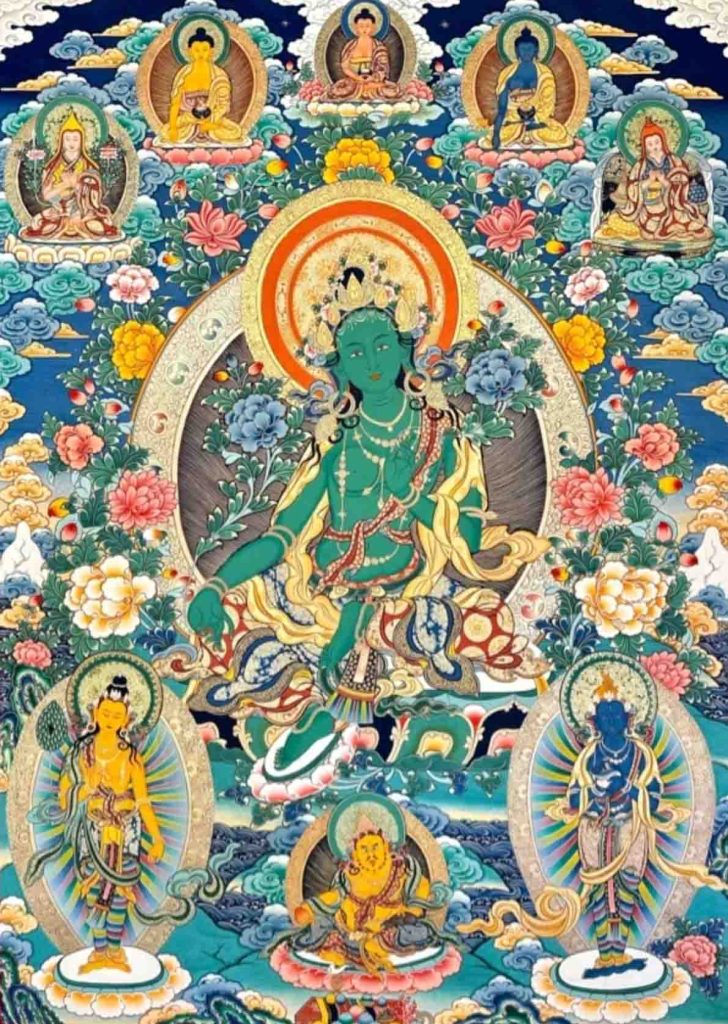
4. Our Collection: Selected Masterpieces from the Heart of Tibet
At (Mandala Realm), we work directly with Jokhang artists and temple workshops to offer exclusive thangkas. Each piece comes with:
Certificate of Authenticity, proving its origin and materials.
High-resolution digital documentation (inspired by the Jokhang Temple’s UNESCO-supported archival project).
Can be custom framed to suit Western interior styles.
Selected Pieces:
“White Tara”: A serene and peaceful image of longevity, painted in silver and pearl pigments.
“Cosmic Mandala”: A gold and indigo map of the universe, perfect for a meditative space.
Modern Fusion Pieces: Contemporary thangkas that blend traditional motifs with abstract expressionism.
5. How to incorporate thangkas into your space
Thangkas are a versatile art form. You can hang one in your living room as a focal point, place a smaller thangka in the center of your altar, or contrast it with minimalist decor. For collectors, we offer custom consultations to select the right thangka for your aesthetic.
Conclusion: Own a thangka of timeless wisdom
Thangka is more than just an art form, it is a bridge connecting the world, a dialogue between ancient spirituality and modern aesthetics. With a thangka that inherits the tradition of Jokhang Temple, you will become the guardian of this living heritage.
“In thangka, every color is a prayer, and every line is a path to enlightenment.”
All thangkas are sustainably sourced and proceeds go to support the Tibetan artisan community.
